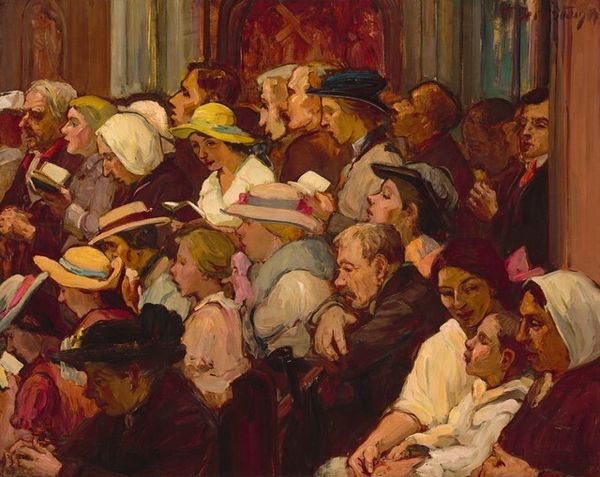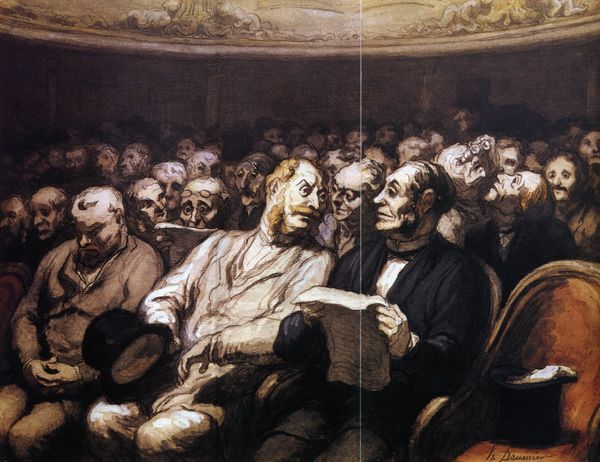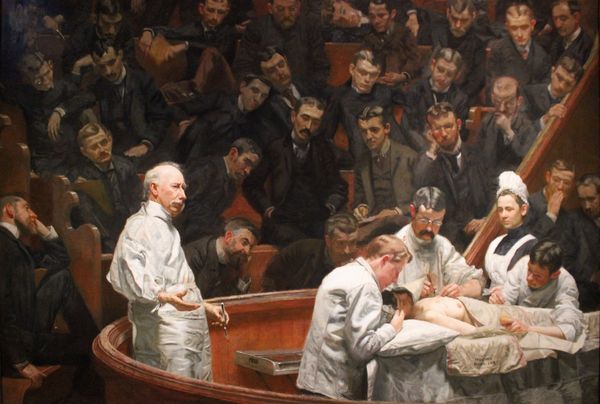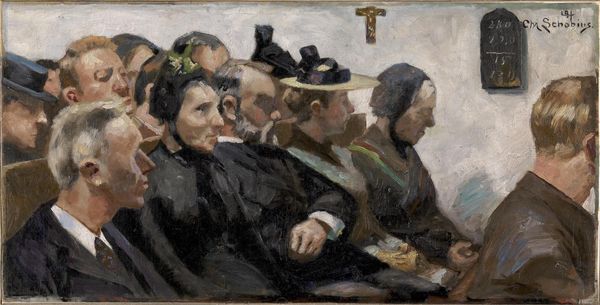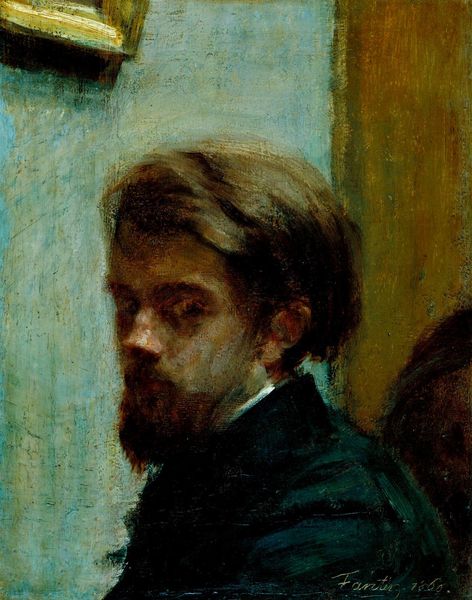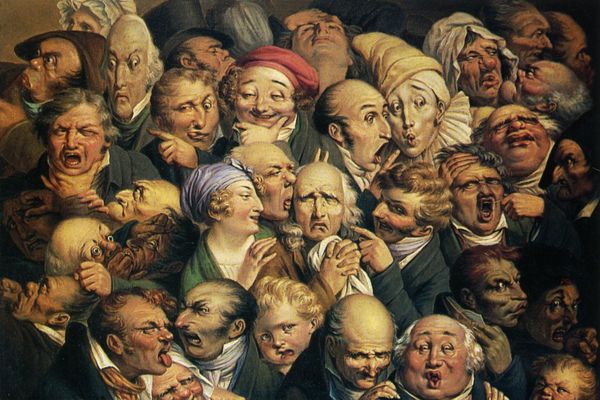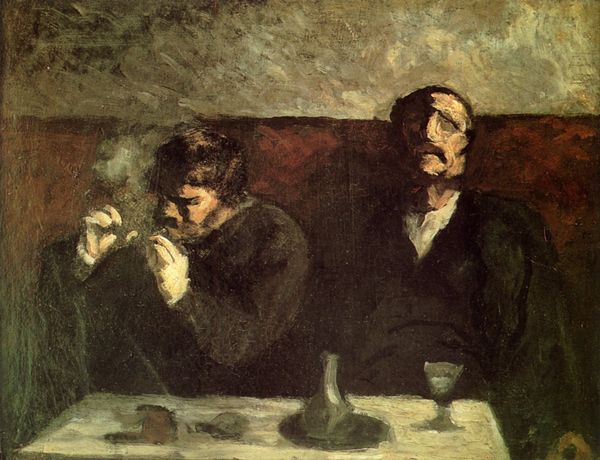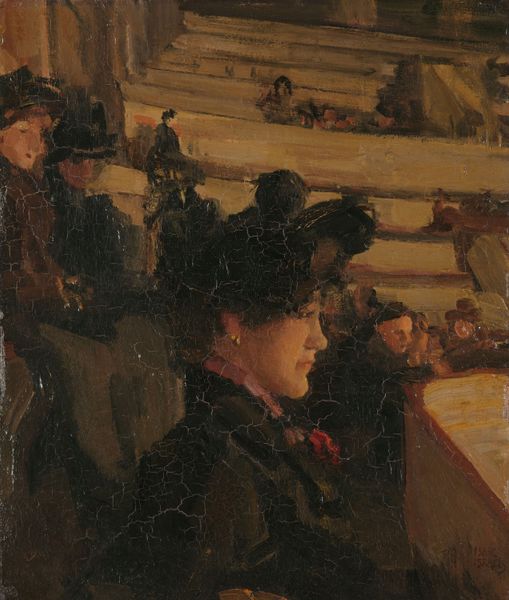
Dimensions: overall: 25.9 x 35 cm (10 3/16 x 13 3/4 in.) framed: 49.5 x 58.7 cm (19 1/2 x 23 1/8 in.)
Copyright: National Gallery of Art: CC0 1.0
Curator: This is Honoré Daumier's "French Theater," an oil painting dating back to approximately 1856. Editor: Immediately, I’m struck by the way the figures seem to emerge from the darkness. There's a real sense of immediacy. You can almost feel the collective anticipation. Curator: Daumier was, of course, a master of capturing social scenes. What's interesting here is his focus on the audience rather than the stage, inverting the typical dynamic of theatrical representation. The theatre, more broadly, can be viewed as a public forum during a rapidly changing era, reflecting and shaping society itself. Editor: Precisely. Look at the spectrum of faces he presents: a variety of ages and expressions – all, presumably, from different classes –united temporarily within that darkened space. There’s an intense focus on the gaze as they're watching something out of frame, the drama they are witnessing on stage has created a community. Curator: It speaks to Daumier's political engagement, which often focused on portraying ordinary people. Art during the Second Empire navigated an uneasy relationship between state patronage and emerging public spheres. By depicting the audience, Daumier indirectly comments on the society that consumes these performances. Editor: And I would argue it highlights questions about spectacle, consumption, and power that still resonate today. I'm particularly drawn to the subtle critiques Daumier layers in his depictions of wealth versus those he paints with visibly less economic power. It speaks volumes about who is afforded access to culture, and what that says about class dynamics. Curator: The muted palette and broad brushstrokes lend it a sense of intimacy despite the public setting. There's also this deliberate lack of idealization; the figures appear almost caricatured, contributing to the painting's realism. This kind of naturalistic, unvarnished observation really set the stage for later developments in art history. Editor: Seeing how Daumier captured the humanity present even in these formal, staged environments, offers such valuable context to further expand how we understand class and social dynamics in nineteenth century France. It is a reminder of art's power to spark dialogue and challenge our assumptions. Curator: It truly brings the era to life, revealing so much beneath the surface of a simple theatre scene. Editor: Absolutely, a work of its time yet speaking to questions that we still wrestle with today.
Comments
No comments
Be the first to comment and join the conversation on the ultimate creative platform.

